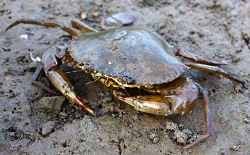Impacts of predator biodiversity loss revealed
Loss of predators can trigger changes to an ecosystem whereby the elimination of one species leads to a chain reaction that reshapes a whole habitat. Understanding the consequences of predator biodiversity loss is thus crucial to predicting how ecosystems will respond to the loss of biodiversity in the real world. Current research shows a high degree of variability in the effects of predator species losses, leading to uncertainty in forecasting what may happen. This challenge was addressed by the EU-funded EcoPred project, which aimed to develop a predictive understanding of the consequences of species extinctions on the functioning of ecosystems. A meta-analysis of the peer-reviewed literature revealed that higher levels of biodiversity drive higher levels of ecosystem functioning under a range of conditions. These included marine experimental systems, when multiple ecosystem functions are considered simultaneously, and in the face of climate change. “Pulling together results from a multitude of studies confirmed that biodiversity is important for ecosystem functioning. What surprised us, was our finding that the loss of predator species often has stronger effects than the loss of species lower in the food web,” explains project researcher Dr John Griffin. The importance of species diversity The analysis also revealed those areas where understanding is currently limited, such as how these relationships vary with spatial scale and is underpinned by functional traits. “Ecologists have amassed an impressive number of experiments testing the importance of species diversity,” says Dr Griffin. “These studies show that the identity of species being lost can be just as important as the number of species. The next step is appreciating how and why certain species have such strong effects – that’s where looking at species traits can really help.” An experimental approach involving an international network of scientists identified the key functional traits underlying the effect of multiple predators on their prey and functioning of the ecosystem. Once identified, key traits were used to explain and predict the effects of predator species loss in different situations and across different ecosystems. According to Dr Griffin: “Linking traits to functionality in predators is immensely challenging because they engage in a suite of behavioural interactions with other predators and their prey. Nevertheless, our work shows that certain traits such as the spatial domain of predators and their body size can prove predictive.” Traits studied across ecosystems Experiments conducted in salt marshes in the United States showed that the metabolic demands of consumer populations have important consequences for plants. This provided some of the first evidence from experiments conducted in the field that key traits of organisms, such as body size and therefore metabolic demand, can be scaled up to the population level. These findings can help validate and support the wider use of metabolic demand (or ‘metabolic biomass’) in consumer-resource models. Researchers also found that species traits can be modified across ecosystems by the simulated extinction of predator species, resulting in ecosystem-level effects. In salt marshes, for example, the loss of benthic predators causes prey to shift upwards to the cordgrass canopy, where their grazing effects are intensified. In addition, field experiments revealed that movement traits and the resultant habitats of consumer species can influence primary producers. For example, burrowing depth determines the role of detritivores in alpine meadows. EcoPred established an international experimental network in collaboration with colleagues based on Atlantic and Pacific US coasts in order to capitalise on the larger pool of available species across these regions by testing trait hypotheses. “International collaborations are critical to advancing a trait-based framework because they allow you to, collectively, tap into a much greater range of trait diversity than is present in any single region,” Dr Griffin concludes.
Keywords
EcoPred, ecosystem, predator, biodiversity, extinction, trait

